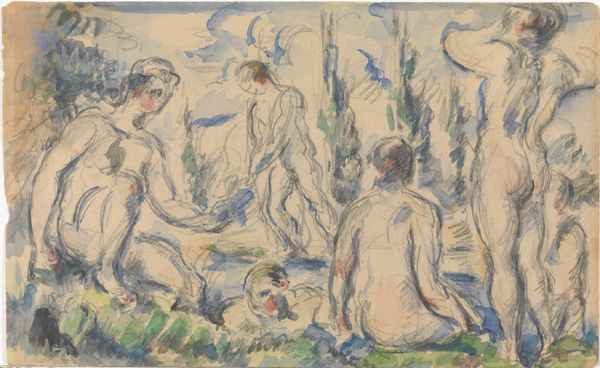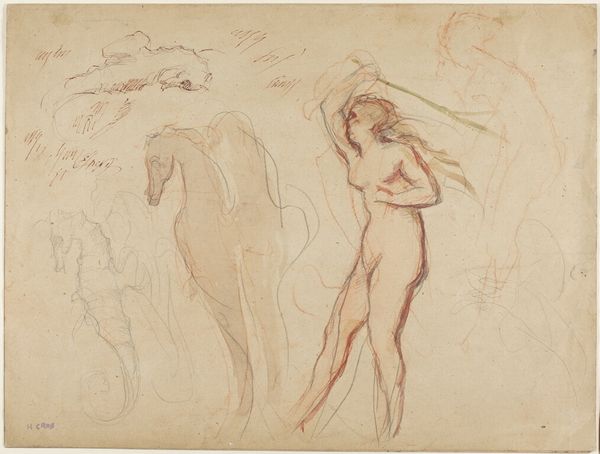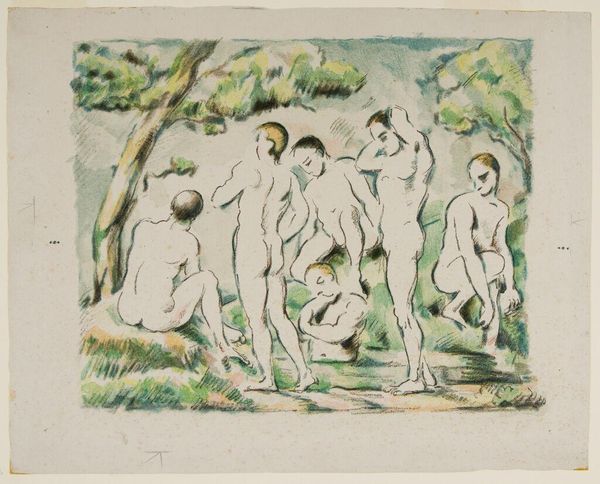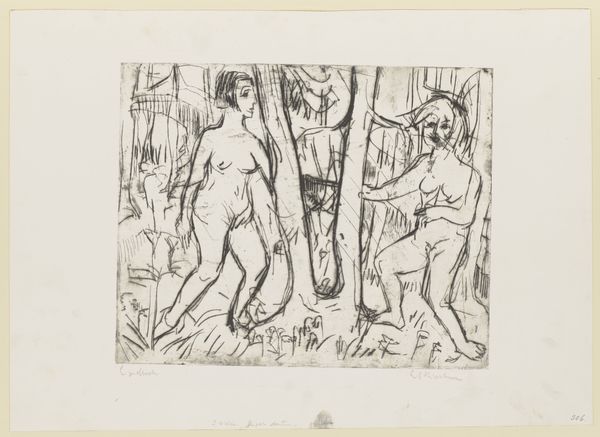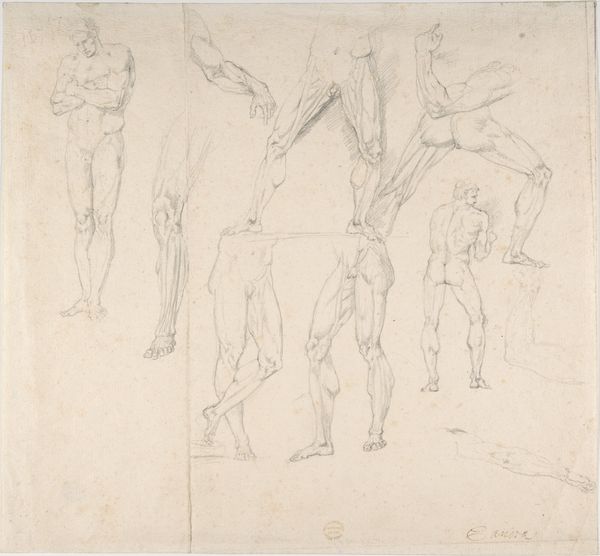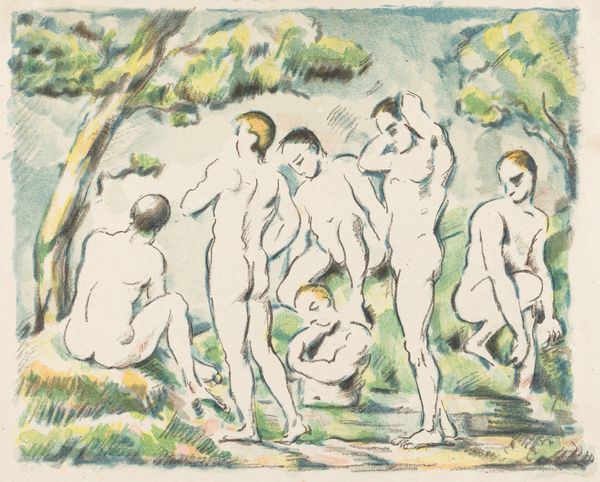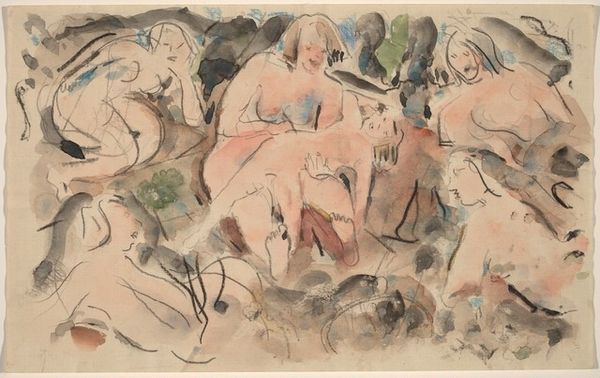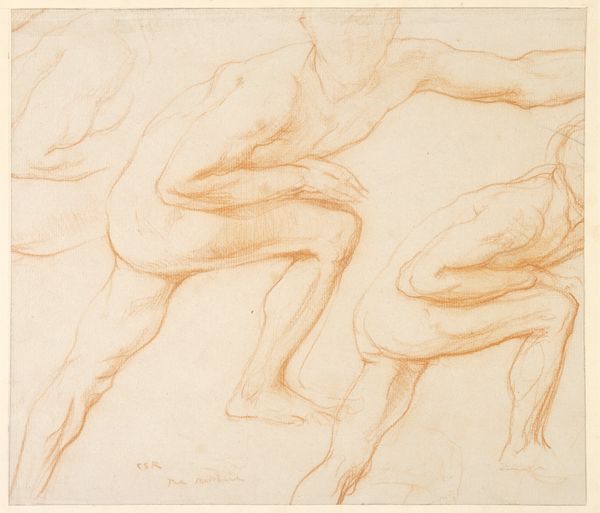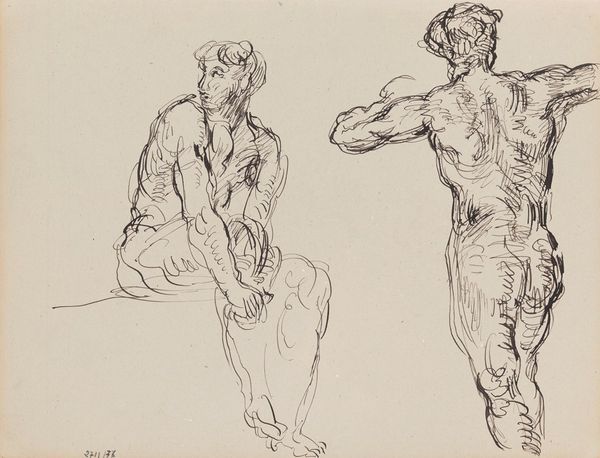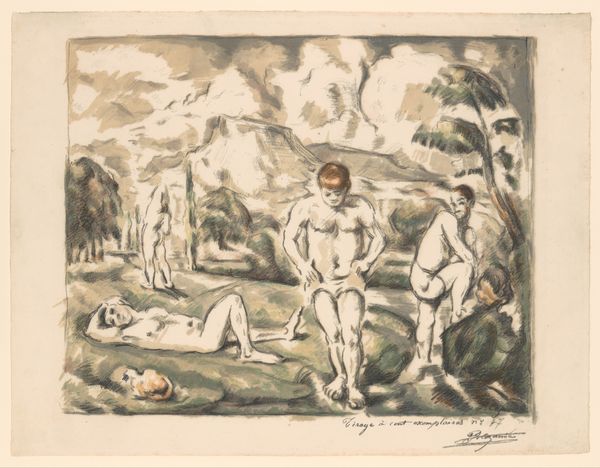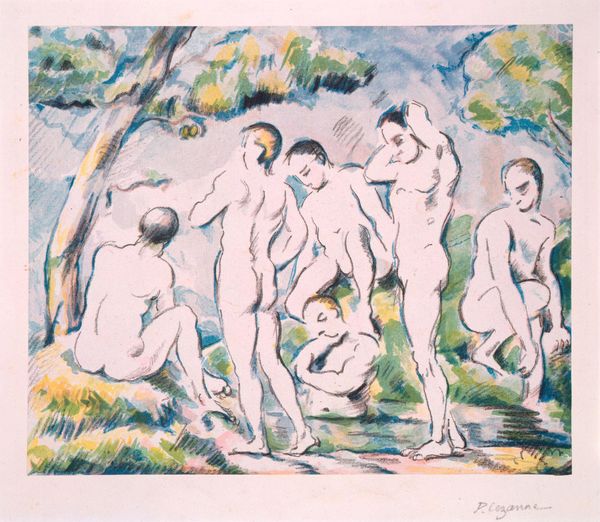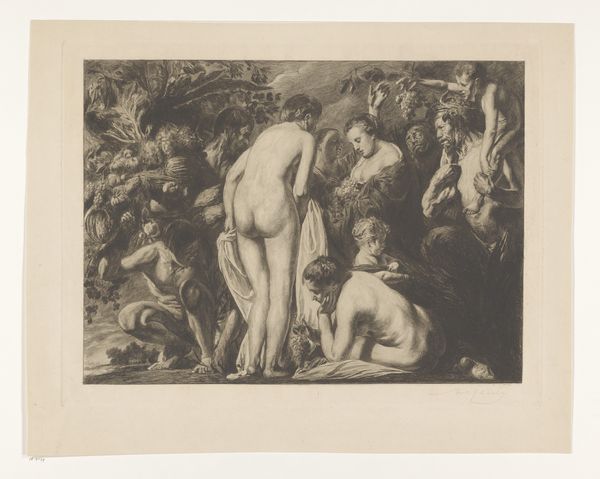
drawing, painting, print, watercolor
#
drawing
#
ink painting
#
painting
# print
#
landscape
#
figuration
#
watercolor
#
post-impressionism
#
nude
#
watercolor
Dimensions: Sheet: 8 5/16 x 10 11/16 in. (21.1 x 27.2cm)
Copyright: Public Domain
Editor: So this is Cézanne's "Bathers," likely painted sometime between 1885 and 1900. It's a watercolor, seemingly a study, housed at the Met. The figures are so loosely rendered, almost dreamlike, and yet the composition feels incredibly solid. What strikes you about this work? Curator: The public reception of Cézanne was initially…mixed. To understand this, we have to consider the academic artistic standards of the time. The Salon system, with its emphasis on highly finished, realistic depictions, largely dictated what was considered "good" art. Cézanne’s deliberately unfinished and, some might say, awkward figures challenged these norms. How do you think his choice of watercolor contributed to the accessibility, or lack thereof, of such subject matter to a broad audience? Editor: That's interesting. I guess watercolour was viewed more as a medium for sketches, less ‘serious’ than oil paint for a formal finished work intended for exhibition. I imagine that his move away from realism and toward abstraction would have been really jarring. Curator: Exactly. This "Bathers" reflects a shift away from idealized nudes, a staple of academic painting, toward a more subjective and modern vision. The very act of depicting everyday figures in a seemingly unfinished state elevates them beyond the mythological or historical subjects favored by the establishment. Does this reading alter your initial understanding? Editor: Yes, it does! Thinking about it in contrast to the established Salon art, it feels more rebellious now. Thanks for sharing your insights, I hadn’t considered that aspect. Curator: And by considering these paintings in the light of how museums function today we can see just how significant Cézanne has become, through strategic placements and choices of canon. Always remember to think critically about how art makes it into institutions like the Met!
Comments
No comments
Be the first to comment and join the conversation on the ultimate creative platform.
